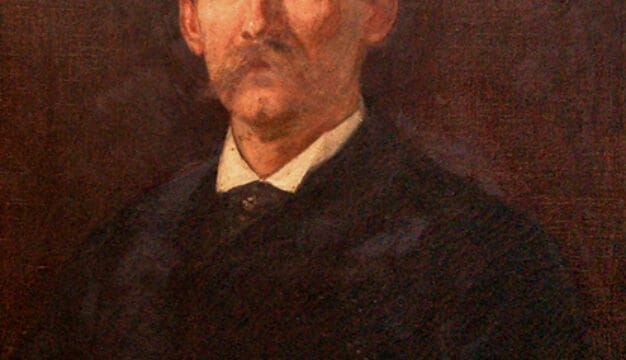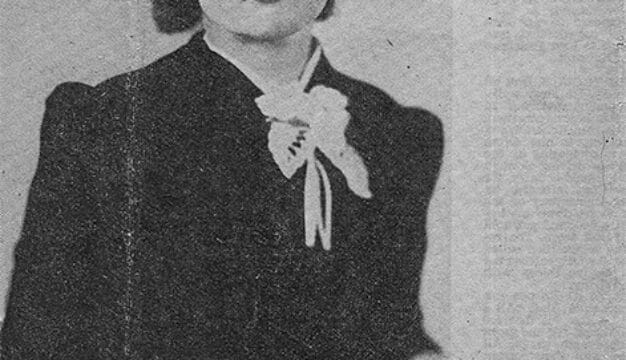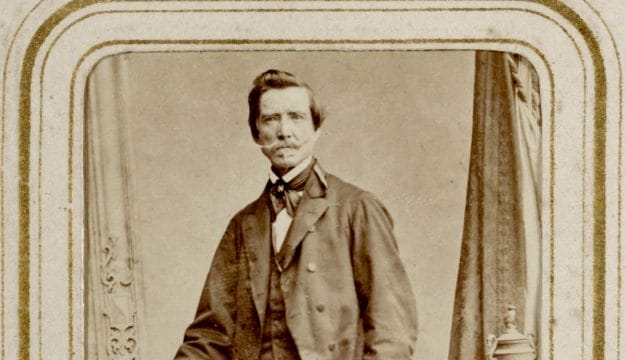Robert Lee Bullard
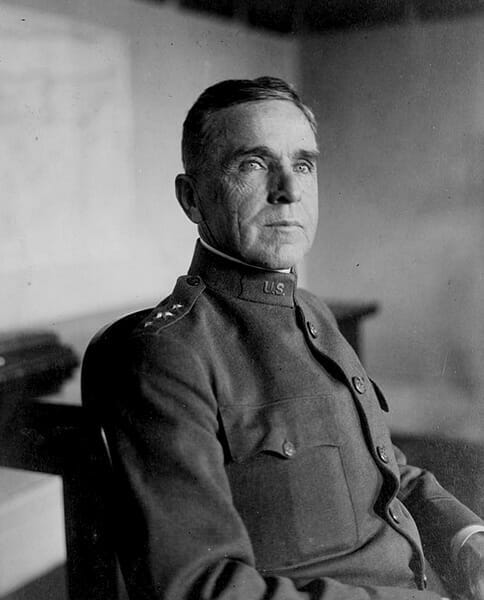 Robert Lee Bullard
Alabamian Robert Lee Bullard (1861-1947) was a professional soldier who served with the U.S. Army on the frontier, during the Philippines Insurrection, and in Cuba before rising to the rank of Lieutenant General of the Second Army in the American Expeditionary Force during World War I. After retiring in 1925, he published widely and was president of the National Security League. In many ways, Bullard was a transitional figure from the small post-Civil War frontier army to the World War II military fighting a two-front war overseas.
Robert Lee Bullard
Alabamian Robert Lee Bullard (1861-1947) was a professional soldier who served with the U.S. Army on the frontier, during the Philippines Insurrection, and in Cuba before rising to the rank of Lieutenant General of the Second Army in the American Expeditionary Force during World War I. After retiring in 1925, he published widely and was president of the National Security League. In many ways, Bullard was a transitional figure from the small post-Civil War frontier army to the World War II military fighting a two-front war overseas.
Bullard was born on January 15, 1861, only four days after Alabama seceded from the Union, southeast of Opelika at Youngesborough in what was then Russell County. He was the 11th of 12 children of plantation owner Daniel Bullard of North Carolina and Susan Mizell Bullard, daughter of a circuit-riding Methodist minister. His parents named him William Robert at birth. William’s uncle Capt. Rinaldo M. Greene fought in the Eastern theater of the Civil War mostly under the command of Gen. Robert E. Lee and his unit, the Sixth Alabama, was present at the surrender at Appomattox, and young William was inspired by his tales of suffering and bravery. After the Alabama Legislature created Lee County (named for Robert E. Lee) from parts of Russell, Tallapoosa, Macon, and Chambers Counties in 1866, William asked his family to change his name to Robert Lee Bullard, which they did. He was known as Lee thereafter.
 Bullard House
In 1876, Bullard’s family moved to Oak Bowery, nine miles north of Opelika. Oak Bowery was a seat of Methodism and provided plenty of tutors for the younger Bullard children. The family lived in a plantation home that had been built in 1850 by planter James Ferguson Dowdell, who would later serve in the U.S. Congress and the Confederate States Army, and was a president of the Alabama Agricultural and Mechanical College (now Auburn University). The Bullard children named the home Oak Grove. After studying for four years under the minister at Oak Bowery Methodist Church, Lee Bullard taught school for a few months to earn enough money to attend the Alabama Agricultural and Mechanical College.
Bullard House
In 1876, Bullard’s family moved to Oak Bowery, nine miles north of Opelika. Oak Bowery was a seat of Methodism and provided plenty of tutors for the younger Bullard children. The family lived in a plantation home that had been built in 1850 by planter James Ferguson Dowdell, who would later serve in the U.S. Congress and the Confederate States Army, and was a president of the Alabama Agricultural and Mechanical College (now Auburn University). The Bullard children named the home Oak Grove. After studying for four years under the minister at Oak Bowery Methodist Church, Lee Bullard taught school for a few months to earn enough money to attend the Alabama Agricultural and Mechanical College.
Although the college did not charge tuition, Bullard feared he would run out of money for living expenses and took a competitive examination to enter the United States Military Academy at West Point in June 1881. He had a mediocre record there, graduating 27th of 39 students in the Class of 1885. He served as class sergeant and later as class lieutenant and believed these positions made him a better field officer than did his academic classes. Sec. Lt. Bullard reported to the Tenth Infantry at Fort Union, New Mexico Territory, in October 1885. In the summer of 1886, Bullard was quartermaster of Company H during the Geronimo Campaign into Mexico, but the Apaches surrendered to another unit and were incarcerated. Bullard returned to garrison duty at Fort Union.
In the spring of 1888, Bullard married Rose Brabson, daughter of an Army officer. Unfortunately, she was frail and ill most of her life, and suffered from long military separations from her husband. She was a Roman Catholic, and Bullard converted in 1901 on their ship returning from his Philippines deployment. The Bullards had three sons, two of whom attended West Point, and a daughter also named Rose.
Promoted to first lieutenant in 1892, Bullard stayed with the frontier army until the Spanish-American War broke out in 1898. He later accepted a commission from Alabama governor Joseph F. Johnston as a major in the Third Alabama Volunteer Infantry, a battalion of African American troops headquartered at Mobile, Mobile County. When Alabama raised the unit to regimental strength, Johnston appointed Bullard as its colonel.
 Col. Eugene M. Caffey, Rose Bullard, and Robert Lee Bullard
The Third Alabama transferred to Camp Shipp in Anniston, Calhoun County, and Bullard lobbied for its deployment to put down the Philippine Insurrection, but the unit was disbanded in March 1899. Bullard transferred to the Thirty-ninth Volunteer Infantry in the Philippines as colonel of volunteers. He led nine combat missions in the Luzon Campaign, returned to the United States in 1901, and returned to the Philippines in 1902 as a major in the Army’s Twenty-eighth Infantry Regiment to pacify the Moros of Mindanao. From December 1903 to July 1904, Bullard served as the governor of Lake Lanao Province under Gen. Leonard Wood. After a long furlough in San Francisco and a stint at Fort Snelling, Minnesota (where he returned to his Regular Army rank of major), he joined the Army of Cuban Pacification in 1906 as special political agent and acting secretary of public instruction. He returned to the United States when U.S. forces withdrew in 1909.
Col. Eugene M. Caffey, Rose Bullard, and Robert Lee Bullard
The Third Alabama transferred to Camp Shipp in Anniston, Calhoun County, and Bullard lobbied for its deployment to put down the Philippine Insurrection, but the unit was disbanded in March 1899. Bullard transferred to the Thirty-ninth Volunteer Infantry in the Philippines as colonel of volunteers. He led nine combat missions in the Luzon Campaign, returned to the United States in 1901, and returned to the Philippines in 1902 as a major in the Army’s Twenty-eighth Infantry Regiment to pacify the Moros of Mindanao. From December 1903 to July 1904, Bullard served as the governor of Lake Lanao Province under Gen. Leonard Wood. After a long furlough in San Francisco and a stint at Fort Snelling, Minnesota (where he returned to his Regular Army rank of major), he joined the Army of Cuban Pacification in 1906 as special political agent and acting secretary of public instruction. He returned to the United States when U.S. forces withdrew in 1909.
Because Bullard had prior experience training cadets, he was assigned to train National Guard officers in San Francisco and Hawaii in 1910. Promoted to colonel in the Regular Army in 1911, he attended a field officer course at Ft. Leavenworth followed by the Army War College in Washington, D.C., in 1912, partly in hopes of providing his family a more stable life. Gen. Wood’s reorganization of the Army in 1912 and the Mexican Revolution, however, saw Bullard commanding the Fourth Brigade, Twenty-sixth Infantry Regiment, at Texas City, Texas, later that year. In August 1915, Bullard’s unit moved to Brownsville to garrison the lower Rio Grande Valley in advance of the Mexican Punitive Expedition led by Gen. John J. Pershing against Francisco “Pancho” Villa from February 1916 to March 1917.
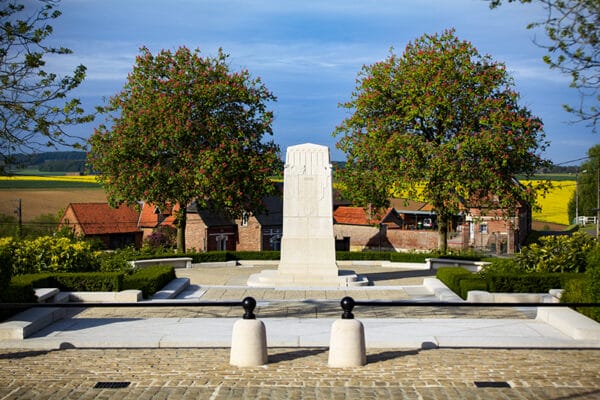 Cantigny Monument
When the United States entered World War 1 in April 1917, Bullard commanded an officer training camp at Ft. Logan H. Roots, Arkansas, until he joined the First Division as commander of its Second Brigade in the American Expeditionary Force (AEF). Once in France, he created a system of officer training schools for the rapidly assembled AEF, and he was soon promoted to brigadier then to major general.
Cantigny Monument
When the United States entered World War 1 in April 1917, Bullard commanded an officer training camp at Ft. Logan H. Roots, Arkansas, until he joined the First Division as commander of its Second Brigade in the American Expeditionary Force (AEF). Once in France, he created a system of officer training schools for the rapidly assembled AEF, and he was soon promoted to brigadier then to major general.
AEF Commanding General Pershing was particularly interested in the combat readiness and élan, or spirit, of the First Division, known as the Big Red One. Its performance would determine his ability to create a distinct American army not under French and British command. The First Division commander, fellow Alabamian Gen. William Sibert, was an accomplished engineer, but his ill health and misunderstanding of the politics of commanding Pershing’s favored division led Pershing to replace him with Bullard on December 14, 1917.
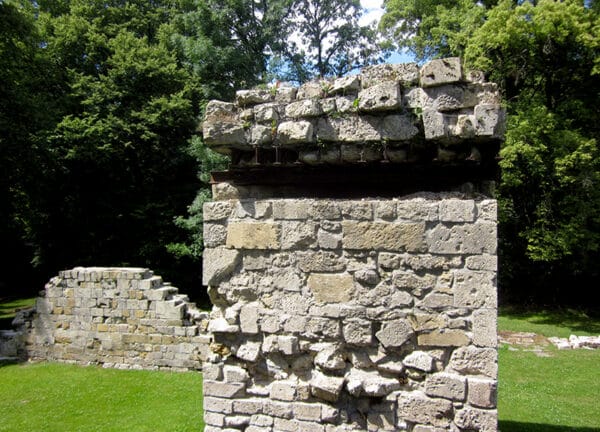 German Machine Gun Nest Ruins
Bullard did not disappoint Pershing. His first combat action was at the Battle of Cantigny (in the Somme Department in northeastern France) when the First Division relieved French regulars on April 3, 1918. The First sparred with the Germans until they joined battle on May 28-31, resulting in an Allied victory. On July 8, Pershing appointed Bullard as commander of III Corps composed of the First and Second Divisions.
German Machine Gun Nest Ruins
Bullard did not disappoint Pershing. His first combat action was at the Battle of Cantigny (in the Somme Department in northeastern France) when the First Division relieved French regulars on April 3, 1918. The First sparred with the Germans until they joined battle on May 28-31, resulting in an Allied victory. On July 8, Pershing appointed Bullard as commander of III Corps composed of the First and Second Divisions.
Another controversy developed after World War I about Bullard’s actions on the first day of the Meuse-Argonne offensive, September 26, 1918. He failed to support another unit’s charge on the German strongpoint of Montfaucon (in the Meuse Department in northeastern France), leading to severe casualties and stalling the American advance. Pershing originally dismissed this as unclear orders, but Col. Ewing Booth inconclusively investigated the matter from 1920 to 1940 and in 2016 author William Walker directly accused Bullard of altering Pershing’s orders then covering up his insubordination.
Regardless, in October 1918 Bullard received command of the newly created Second Army and on November 1 was promoted to lieutenant general. His first assignment was an attack toward Metz that launched on the morning of November 11, just hours before the Armistice took effect. The Second Army stayed to garrison the Metz area. Bullard maintained the unit’s training and discipline for morale and because he was not sure that the Armistice would hold.
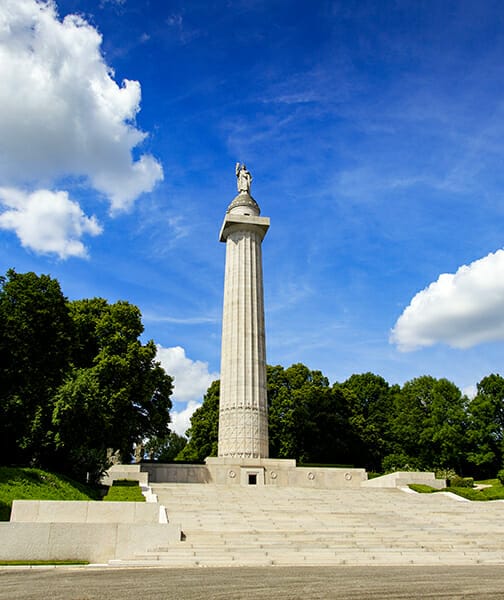 Montfaucon American Monument
Yet another controversy erupted from Bullard’s experiences with the Second Army, one unit of which was the all-African American Ninety-second Division. During the Meuse-Argonne Offensive, its 368th Regiment severely faltered under a German attack, which tarnished the division’s reputation though it performed well in every other engagement. In 1925, the Hearst newspapers syndicated Bullard’s memoirs in which he defamed all African American soldiers based on the problems of the 368th. This contradicted his published praise of the Third Alabama in 1899. Reaction to Bullard’s slights came immediately, and the issue lingered long enough that Bullard’s biographer, Allen R. Millett, addressed it 50 years later.
Montfaucon American Monument
Yet another controversy erupted from Bullard’s experiences with the Second Army, one unit of which was the all-African American Ninety-second Division. During the Meuse-Argonne Offensive, its 368th Regiment severely faltered under a German attack, which tarnished the division’s reputation though it performed well in every other engagement. In 1925, the Hearst newspapers syndicated Bullard’s memoirs in which he defamed all African American soldiers based on the problems of the 368th. This contradicted his published praise of the Third Alabama in 1899. Reaction to Bullard’s slights came immediately, and the issue lingered long enough that Bullard’s biographer, Allen R. Millett, addressed it 50 years later.
Bullard returned from France in June 1919. After temporary duty in Washington, D.C., he became commander of the Army’s Eastern Department headquartered at Fort John Jay on Governor’s Island near Manhattan. Bullard’s department was later changed to the Second Corps Area, composed of the First Infantry Division, two coastal artillery units, and the National Guards of New York, New Jersey, and Delaware. His duties were to maintain the skeletonized units and oversee training of the National Guard and Reserve Officers.
He entertained the New York social elite and kept up a steady stream of pro-Army public relations as a well-regarded speaker and author. His own richly appointed life at Fort John Jay, the advancing materialism he perceived in American society, and the death of his wife Rose in 1921, hardened his political stances and his underlying authoritarianism. He favored compulsory universal military training to keep the Army at full readiness and became increasingly anti-labor, anti-foreigner, and diplomatically isolationist. He also favored decreasing the size of government and expanding the size of the military.
Bullard retired on January 15, 1925, his 64th birthday, then moved into a small apartment in Manhattan. Within a month, the National Security League (NSL) offered him its presidency, a post he retained until his death. The NSL had organized in 1914 to advocate for preparedness and universal military training. During the war, it supported the draft and suppression of dissent. In the 1918 congressional campaign, the NSL questioned the patriotism of candidates it considered insufficiently “American,” which led to a congressional investigation and the NSL’s collapse. Bullard hoped he could revive it, but it staggered along until it went bankrupt. Thereafter, Bullard maintained the NSL in name only from his apartment until he closed it in 1942.
Without the benefits of serving at Fort John Jay and with inflation compressing his retirement salary, Bullard sought supplemental income. He became the military affairs columnist for Hearst newspapers and the NSL’s Liberty magazine. He also penned four books, though only three—Personalities and Reminiscences of the War in 1925, American Soldiers Also Fought in 1936, and Fighting Generals in 1944—found publishers. In 1927, he married Ella Reiff Wall, a widowed Philadelphia socialite, and he was returned to the rank of lieutenant general when the Army restored all its retired World War officers to their AEF ranks.
As the economy succumbed to the Great Depression, Bullard opposed government intervention, particularly Pres. Franklin Roosevelt’s New Deal. The threat of a new European war, however, led Bullard to support Roosevelt’s moves to rearm. He feared the country did not have the capacity to fight a modern war, so before and during World War II, he publicly goaded Congress and the president to build up forces and change Army doctrine to rely on combined arms rather than on infantry alone. The U.S. military did alter its strategic doctrine, but because of wartime experience rather than Bullard’s insistence.
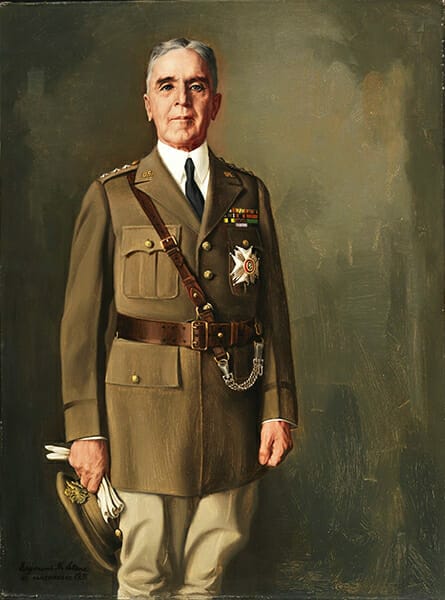 Robert Lee Bullard
In his 1925 book, Personalities and Reminiscences of the War, Bullard rightly recognized his good fortune with the AEF and in retirement. After the Armistice, French marshal Phillipe Petain presented him with the Croix de guerre with palm leaf, the French president awarded him the rank of Commandeur in the Legion d’Honeur, and the United States presented him the Distinguished Service Medal. Later, Belgium awarded him its Order of Leopold and Italy decorated him with the Crosses of St. Maurice and St. Lazarus. Bullard also received a number of honorary degrees. Pennsylvania Military College made him a doctor of military science in June 1923 and both Columbia University (1925) and Alabama Polytechnic Institute (1938) conferred doctorates on him.
Robert Lee Bullard
In his 1925 book, Personalities and Reminiscences of the War, Bullard rightly recognized his good fortune with the AEF and in retirement. After the Armistice, French marshal Phillipe Petain presented him with the Croix de guerre with palm leaf, the French president awarded him the rank of Commandeur in the Legion d’Honeur, and the United States presented him the Distinguished Service Medal. Later, Belgium awarded him its Order of Leopold and Italy decorated him with the Crosses of St. Maurice and St. Lazarus. Bullard also received a number of honorary degrees. Pennsylvania Military College made him a doctor of military science in June 1923 and both Columbia University (1925) and Alabama Polytechnic Institute (1938) conferred doctorates on him.
Robert Lee Bullard died of a stroke on September 11, 1947, in New York City after being confined to the hospital with a broken leg and severe arterial disease and was buried at West Point with Ella, who died in 1963. He received many glowing obituaries and eulogies that revived him from relative obscurity for a short while. But he was always a man slightly out of synch with the times, a throwback of sorts to the army that emerged on the frontier after the Civil War, fought in Cuba and the Philippines, and struggled to find its place in World War I. After World War II, the United States grew into a superpower that saw soldiers like Bullard as quaint reminders of a simpler time. Bullard was elected to the Alabama Men’s Hall of Fame in 1948 and to the Alabama Military Hall of Honor in 1999.
Additional Resources
Millett, Allen R. The General: Robert L. Bullard and Officership in the United States Army, 1881-1925. Westport, CT: Greenwood Press, 1975.
Olliff, Martin T. “Bullard, Robert Lee.” 1914-1918 Online: International Encyclopedia of the First World War, October 8, 2014, https://encyclopedia.1914-1918-online.net/article/bullard_robert_lee.
Walker, William. Betrayal at Little Gibraltar: A German Fortress, a Treacherous American General, and the Battle to End World War I. New York: Scribner, 2016.

